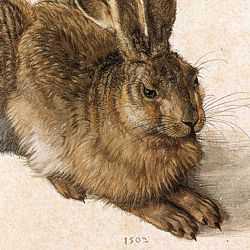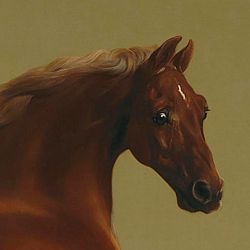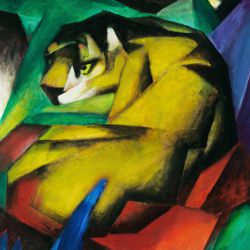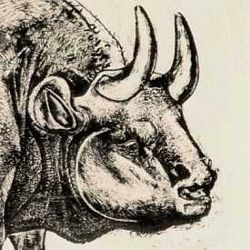Animals in Art - Albrecht Dürer
Albrecht Dürer was fascinated by nature as he believed that the study of the natural world could reveal the fundamental truths he was seeking to discover through his art.
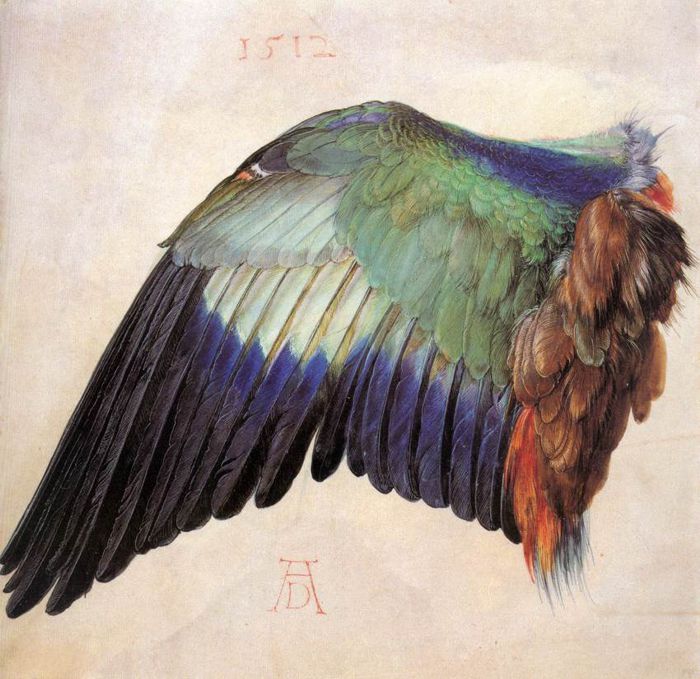
ALBRECHT DÜRER (1471-1528)
'The Wing of a Blue Roller' 1512 (watercolor and gouache), Albertina Museum, Vienna.
Albrecht Dürer was born in the city of Nuremberg, a lively cultural and commercial center in 15th century Germany. He was the third of eighteen children. Originally taught to draw by his father who was a goldsmith, he seems to have inherited that craft's appreciation of fine detail. Although Dürer became one of the greatest oil painters of the Northern Renaissance, he is equally famous for his exquisite watercolors, engravings and woodcut prints.
Animals were not generally considered to be appropriate subjects for serious art until the eighteenth century when George Stubbs elevated the genre by the sheer quality of his work. Critics felt that the painting of animals was simply a demonstration of technical skill, and as such did not aspire to the creative vision of great art. Almost two centuries before, Albrecht Dürer was one of the first artists to view animals as a subject worthy of attention and he demonstrates this across a range of watercolors and prints that have become hugely popular and frequently reproduced.
'The Wing of a Blue Roller' is one such example of his remarkable drawing ability. It is a beautiful watercolor painting that accurately captures the structure, texture and shimmering color of the bird's feathers. He uses watercolor to delicately blend the soft graduating color of the plumage and overpaints linear detail with gouache (an opaque watercolor) to pick out the jagged edges of the feathers.
Dürer was fascinated by nature as he believed that the study of the natural world could reveal the fundamental truths he was seeking to discover through his art. He wrote, "Nature holds the beautiful, for the artist who has the insight to extract it. Thus, beauty lies even in humble, perhaps ugly things, and the ideal, which bypasses or improves on nature, may not be truly beautiful in the end."
Dürer's Rhinoceros
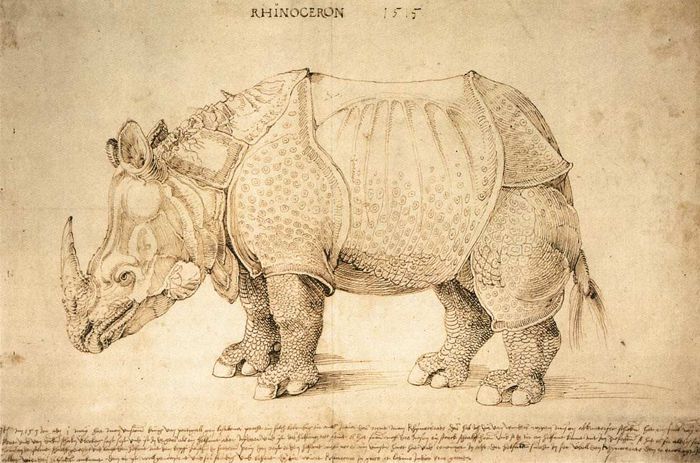
ALBRECHT DÜRER (1471-1528)
'Rhinoceros' 1515 (pen and ink)
At the beginning of the 16th century, the natural world of animals and plants was becoming a focus of scientific and cultural interest as explorers and travelers were returning from distant lands with examples and illustrations of new species. Dürer shared this fascination for the subject which he revealed in many of his drawings, watercolors and prints.
His pen drawing of an Indian rhinoceros is a typical example of his interest in animals. The image of the rhinoceros is based on some notes and a sketch done by an unknown artist done in Lisbon in 1515. Dürer never saw the actual creature in real life which accounts for its strange anatomical errors. He enhances the public mythology of this strange beast, which had not been seen in Europe since Roman times, by drawing the folds of its skin like plates of armour and adding an extra horn to its back. It is remarkable that this exaggerated image was generally accepted as an accurate representation of a rhinoceros until around the middle of the 18th century.
A rough translation of the inscription at the bottom of the drawing reads, "On the first of May in the year 1513 AD, the powerful King of Portugal, Manuel of Lisbon, brought such a living animal from India, called the rhinoceros. This is an accurate representation. It is the color of a speckled tortoise, and is almost entirely covered with thick scales. It is the size of an elephant but has shorter legs and is almost invulnerable. It has a strong pointed horn on the tip of its nose, which it sharpens on stones. It is the mortal enemy of the elephant. The elephant is afraid of the rhinoceros, for, when they meet, the rhinoceros charges with its head between its front legs and rips open the elephant’s stomach, against which the elephant is unable to defend itself. The rhinoceros is so well-armed that the elephant cannot harm it. It is said that the rhinoceros is fast, impetuous and cunning."
Dürer's Prints
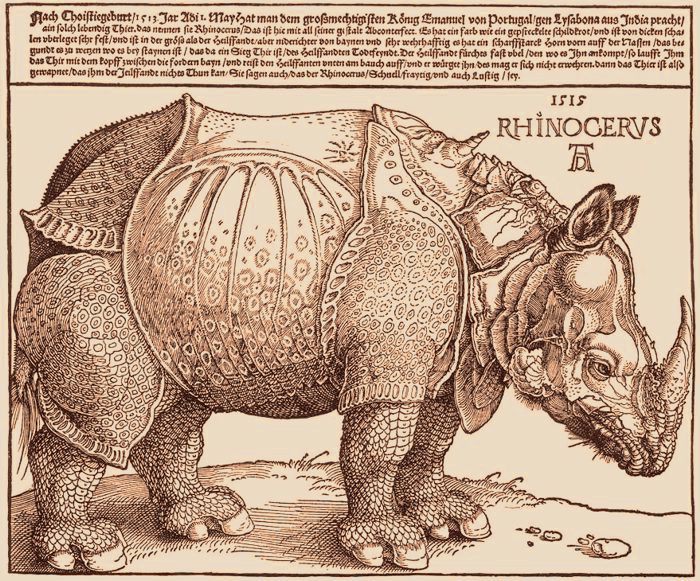
ALBRECHT DÜRER (1471-1528)
'Rhinoceros' 1515 (woodcut print)
Dürer's illustrations and prints demonstrate astonishing powers of observation allied to a painstaking technique across a range of different media. His pen drawing of the 'Rhinoceros' also served as a sketch for a woodcut print. Dürer was exceptionally skilled in the art of woodcuts, an early form of relief printing that was traditional in Germany. He produced hundreds of woodcuts and raised the profile of this lowly medium to a level that has never been surpassed.
The woodcut technique, which was originally devised for printing on cloth, involves drawing the image to be printed onto a block of soft wood. Specialist craftsmen would then cut away the 'white bits' around the drawing leaving the remaining image raised up on the face of the block. Finally, this would inked with a roller an a print taken from its surface. You will notice that in Dürer's print, the rhinoceros is facing in the opposite direction from the drawing as the printing process reverses the image. This means that all the lettering on the inscription had to be drawn backwards so that it looked correct in the final image.
Dürer's Hare

ALBRECHT DÜRER (1471-1528)
'A Young Hare' 1502 (watercolor and gouache)
Dürer's most popular image and certainly his most commercial today is a watercolor of 'A Young Hare'. It was painted for the sheer enjoyment that Dürer experienced in creating images and it is this pleasure that we experience when looking at it. The life and vitality of the creature is a testament to Dürer's skill as an artist as it was probably drawn from a stuffed model. This is a virtuoso piece of watercolor painting that demonstrates the intensity of an artist’s vision when executed with a total control of his medium.
To begin the work, Dürer lightly sketched the image and underpainted it with some brown washes. Then he patiently built up the texture of the fur with a variety of dark and light brushstrokes in both watercolor and gouache. Gradually, the painting is brought to completion with the addition of a few refined details such as the whiskers and the meticulous reflection of a window in the creature's eye. Finally, the artist dated and signed the work with his famous monogram - a mark of his approval and a sign that he thought of this work as as a finished artwork in its own right.
Ironically it was Dürer's interest in the animal world that led to his death. On a trip to the Netherlands in 1520, it is believed that he contracted malaria in the swamps of Zeeland when traveling to see a beached whale. He died in 1528 as a result of the disease.
Albrecht Dürer Notes

ALBRECHT DÜRER (1471-1528)
'Self Portrait' 1500 (oil on panel)
Dürer was born in 1471 in the German city of Nuremberg and died there in 1528.
-
He was the third child and second son in a family of eighteen children.
-
Dürer trained as a goldsmith in his fathers workshop until he was apprenticed to the Nuremberg painter, Michael Wolgemut, at the age of fifteen.
-
In 1494 he married Agnes Frey but their marriage was childless.
-
In the same year, Dürer visited Italy where he was strongly influenced by the art he saw there.
-
Dürer's paintings have many of the sharp ornamental characteristics of Northern Renaissance art but they are also infused by the qualities of light and color that he discovered in Venetian art.
-
The transcription on his self portrait opposite reads, 'Thus I, Albrecht Duerer from Nuremburg, painted myself with indelible colors at the age of 28 years.'
-
Dürer's oil paintings, watercolors, drawings and prints all demonstrate a very painstaking technique executed with an astonishing skill.
-
Dürer's paintings include mostly portraiture and religious art but his international reputation was founded on his printmaking and illustration skills.
-
Dürer produced hundreds of woodcuts and engravings which raised the profile of printmaking to a level that has never been surpassed.
-
The outstanding quality of Dürer's studies of animals and plants also elevated the humble art of illustration to a subject worthy of serious attention in fine art.
-
Dürer often signed his finished works with his distinctive 'AD' monogram which was usually accompanied by a date. This represented both the initials of his name and the date heading 'Anno Domini' which is Latin for 'the year of our Lord'.
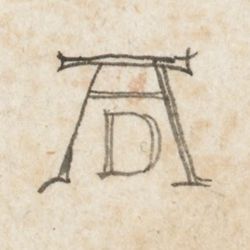
Dürer's Monogram

